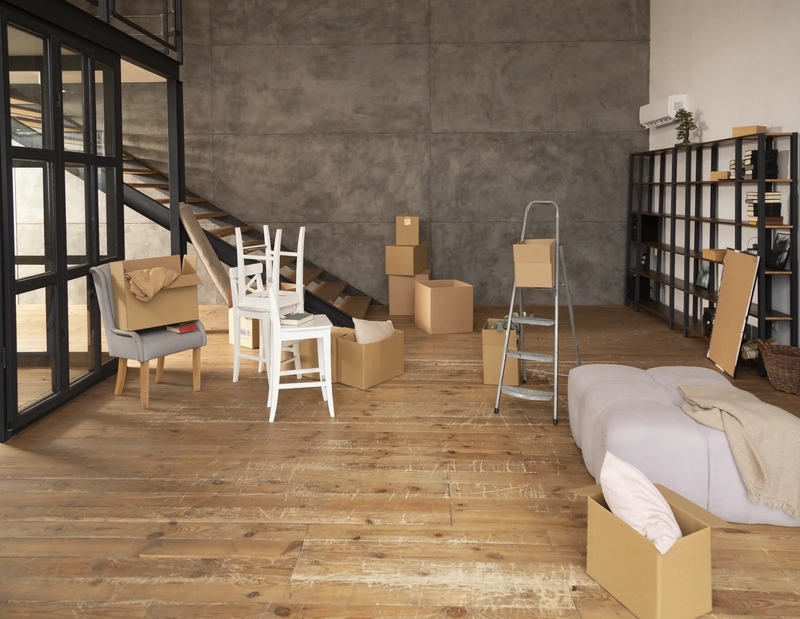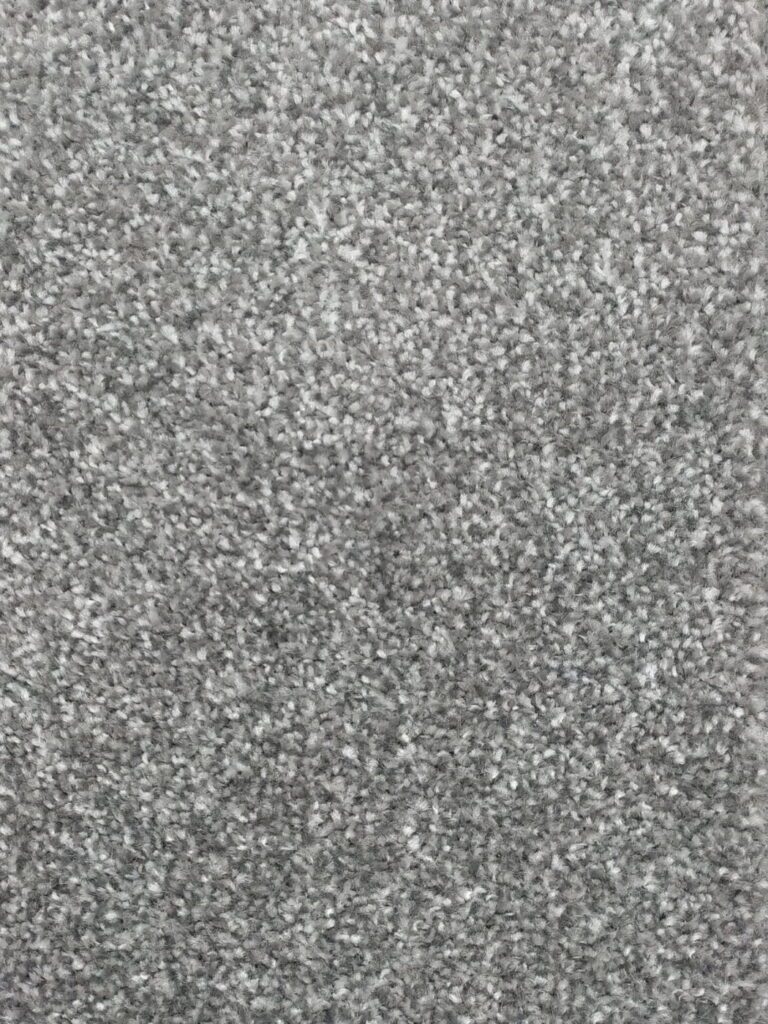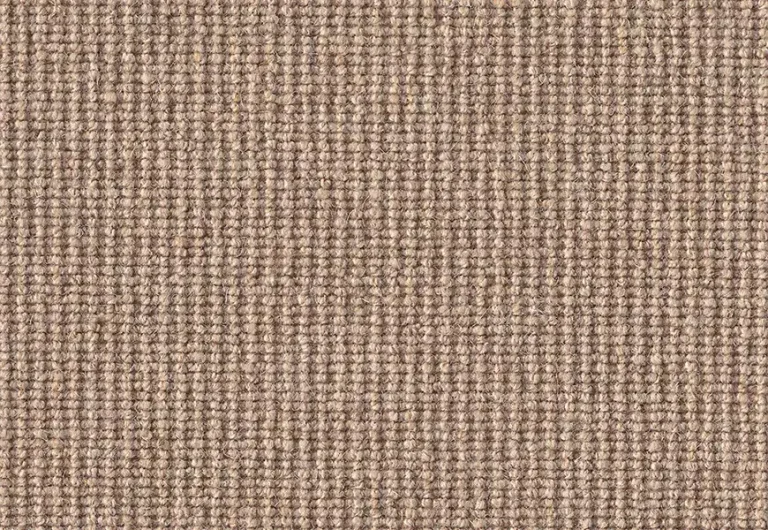Choosing the right flooring for your basement can significantly impact its comfort, design, and functionality. Consulting with interior designers also provides valuable insights. You may wonder, should i put carpet in my basement?
Among the various options, carpet often emerges as a popular choice, offering advantages like warmth, sound absorption, and cost-effectiveness. It’s not without its drawbacks, such as susceptibility to moisture, mold, and allergens like dust mites.
We explore the pros and cons of carpeting your basement, factors to consider before deciding, and some alternative flooring options like luxury vinyl or engineered wood that better suit your space.
Read on to discover what’s best for your basement, considering aspects like installation, maintenance, and durability!
Advantages of Having Carpet in the Basement
Should i put carpet in my basement? Having carpet for basement can offer a multitude of advantages that enhance both functionality and design. From improved insulation and warmth that keeps the area cosy during cold climates to excellent sound absorption that reduces noise from foot traffic, carpet can transform your basement into a comfortable family room or a home cinema.
1. Improved Insulation and Warmth
One of the most notable benefits of carpet in the basement is its ability to provide improved insulation and warmth, making the space more inviting and comfortable all year round, especially when temperatures dip and concrete floors can feel uncomfortably cold against bare feet.
The choice of low-pile carpet, coupled with quality underlay, significantly enhances this insulation effect. This combination not only retains heat but also acts as a barrier against the cold surfaces beneath.
Popular materials such as nylon and polyester are known for their durability and ability to trap warmth, making them excellent options for basement carpeting, even in cold climates.
- Nylon is resilient and easy to maintain.
- Polyester offers a soft touch while being environmentally friendly.
By selecting these materials, homeowners can effectively lower heating costs while ensuring their basement remains a cosy retreat during harsh winter months.
2. Sound Absorption
Carpet is an excellent choice for enhancing sound absorption, and significantly reducing noise levels, which is particularly valuable in a family room or home theater setting.
The unique structure of carpet fibres plays a pivotal role in this process. As these fibres trap sound waves, they minimise the echo and reverberation typically found in hard surfaces. This feature contributes to a more serene environment, allowing family members to enjoy films, music, and conversations without the distraction of excessive noise.
When selecting carpet for such spaces, considering both texture and thickness is crucial.
- Texture: A plush or shag style can absorb more sound, enhancing comfort.
- Thickness: Thicker padding not only softens footsteps but also provides additional layers for sound dampening.
Therefore, the right combination of these factors can truly transform a basement into a cosy haven, elevating overall enjoyment and relaxation.
3. Comfort and Softness
The comfort and softness of carpet provide a welcoming atmosphere, creating a cosy environment for family gatherings and relaxation in the basement.
The gentle touch of carpet underfoot can add a layer of warmth that enhances the overall experience, especially during chilly evenings. This tactile comfort invites individuals to experience the joy of lounging and playing on a plush surface that feels invitingly soft.
Keeping the carpet clean is equally important to maintain its allure and longevity. Regular vacuuming and occasional professional cleanings can help manage the wear and tear from foot traffic while preserving its comforting qualities.
- Opt for stain-resistant treatments to ease maintenance.
- Consider using area rugs in high-traffic zones for added protection.
- Regularly rotate your furniture to distribute wear evenly.
In essence, selecting the right type of carpet not only elevates the aesthetic of the space but also enhances the tactile comfort coveted in any home.
4. Cost-effective Flooring Option
Carpet serves as a cost-effective flooring option for basements, balancing initial installation costs with long-term value and comfort.
When considering flooring alternatives, many homeowners find that carpet not only comes with lower price tags than luxury vinyl or engineered wood but also offers superior warmth and cushioning underfoot.
The installation process of carpet is typically quicker and less labour-intensive, making it a more convenient choice.
With a wide range of colours and textures available, it can effortlessly complement any home decor, enhancing aesthetic appeal.
The sound-absorbing qualities of carpet contribute to a quieter home environment, increasing overall satisfaction and comfort.
Thus, a well-chosen carpet can significantly add to the property’s value, making it an even more appealing investment.
Disadvantages of Having Carpet in the Basement
While carpet can offer numerous benefits, there are notable disadvantages to consider when installing it in a basement, particularly regarding moisture and mould issues.
1. Prone to Moisture and Mold Growth
Carpet is particularly prone to moisture issues in basements, which can lead to mould and mildew growth if not properly managed, creating an unhealthy environment for residents and guests alike. Consistent exposure to high humidity can degrade the carpet fibres, leading to a shortened lifespan and an increase in unpleasant odours. The underlay and flooring can suffer extensive damage, causing structural concerns.
To combat these issues effectively, utilising a dehumidifier is highly recommended. This device helps control humidity levels, ensuring that conditions are maintained within an optimal range.
Here are a few more practical solutions to consider:
- Ensure good ventilation in the basement area.
- Regularly check for leaks and seal gaps where moisture can enter.
- Consider moisture-resistant carpeting options if replacement becomes necessary.
By implementing these strategies, homeowners can protect their carpets while promoting a healthier indoor space.
2. Difficult to Clean and Maintain
Cleaning and maintaining carpets in a basement can pose challenges, especially when it comes to dealing with debris and stains, and ensuring waterproof solutions for water damage.
In environments where moisture is prevalent, the accumulation of dirt and allergens can become a significant concern. Without regular attention, carpets not only lose their appeal but can also harbour unpleasant odours and health issues.
To effectively combat these problems, routine vacuuming emerges as a crucial step. It’s essential for homeowners to understand that neglecting regular maintenance can lead to deeper stains and more intensive cleaning requirements down the line.
- Consider investing in stain-resistant materials or synthetic materials for more manageable upkeep.
- These options can mitigate potential messes, allowing for easy cleaning in the event of spills.
In essence, with the right strategies and materials, maintaining a clean and inviting space becomes entirely achievable.
3. Potential for Allergens and Irritants
Another significant disadvantage of having carpet in the basement is its potential to harbour allergens and irritants such as dust mites and mildew, which can lead to various health concerns for individuals, particularly those with respiratory issues or allergies. These hidden threats can exacerbate conditions like asthma or chronic sinusitis, making it crucial to recognise their impact on indoor air quality and overall well-being. Regular maintenance becomes not just a routine task but an essential aspect of creating a healthy living environment.
To effectively mitigate these issues, consider the following maintenance tips:
- Frequent Cleaning: Vacuum carpets at least once a week using a vacuum equipped with a HEPA filter to trap allergens effectively.
- Professional Deep Cleaning: Schedule professional carpet cleaning every six months to eliminate deeply embedded allergens.
- Selecting Hypoallergenic Materials: Opt for carpets made from natural, hypoallergenic fibres to reduce the presence of irritants.
Implementing these practices can significantly enhance indoor air quality and reduce allergen accumulation, promoting a healthier living space.
Factors to Consider Before Installing Carpet in the Basement
Before deciding to use carpet for basement, there are several key factors to consider, including moisture levels, noise reduction, and the current flooring situation.
a. Basement Usage
The intended use of the basement plays a crucial role in determining whether carpet is the right flooring choice for the space, factoring in specific basement conditions.
When envisioning a basement, one might think about transforming it into a cosy family room where memories are made, or perhaps a cinematic haven for film nights with loved ones. Each potential use influences the decision-making process regarding carpet selection, as the atmosphere and function of the room will affect the overall comfort and durability required. For instance, if the aim is to create a vibrant gathering place, opting for plush carpets could enhance the inviting ambience, while a home cinema might necessitate a darker, more muted tone to improve visual experiences.
Consulting interior designers can further help tailor the choice to your unique needs:
- Consideration of traffic patterns is crucial, as higher foot traffic zones might dictate the need for sturdier options.
- Moisture levels should not be overlooked, leading to a choice of carpets with moisture-resistant backing.
This holistic approach to planning not only ensures aesthetic appeal but also addresses practical concerns, ultimately shaping the basement into a multifunctional haven while leveraging industry expertise for optimal results.
b. Moisture Levels
Assessing moisture levels in the basement is essential when considering carpet installation, as high humidity can lead to issues such as mould, dust mites, and mildew.
Understanding the moisture conditions is not just a one-off task; it requires ongoing evaluation to ensure a healthy living environment. Regular monitoring helps in identifying fluctuations that can arise due to seasonal changes or water leaks. Using a dehumidifier becomes crucial in this scenario, as it controls humidity levels, making the basement safer for carpet installation and helping to keep allergens at bay.
This control over moisture doesn’t just protect the carpet; it also influences the choice of materials. For instance, moisture-resistant carpets are preferable in high-humidity areas, while traditional options might deteriorate quickly.
- Evaluate moisture with handheld metres.
- Regularly check for water stains and leaks.
- Consider environmental controls like a dehumidifier.
The right maintenance tailored to the moisture levels can extend the life of not just your carpet, but also improve the overall air quality in the basement.
c. Existing Flooring
The condition of existing flooring, such as concrete, can significantly impact both the installation process and the choice of carpet. Alternatives like Luxury Vinyl Plank and Engineered Wood might also be considered.
When considering new flooring options, it is imperative to assess the underlying surface as it can serve as a foundation that either enhances or complicates the installation. This evaluation will inform decisions regarding the type of carpet chosen, whether it be plush, loop pile, low-pile variants, or carpet tiles.
Conditions such as moisture levels, uneven surfaces, or the presence of old flooring materials can influence the preparations needed. A thorough assessment, potentially involving experts from Shaw Floors or Mohawk Industries, can reveal:
- Potential moisture barriers that may be required
- The necessity for levelling compounds
- Existing insulation concerns that might affect carpet choice
Therefore, keeping these factors in mind ensures that the selected flooring type not only complements the aesthetic but also aligns with functional requirements, leading to a seamless installation process.
d. Budget
Establishing a budget for carpet installation in the basement is vital to ensure that you make a cost-effective choice without compromising quality. To accurately gauge the total expenses, you should consider not only the carpet costs but also the installation expenses and any potential impacts on your home’s value.
Creating a comprehensive budget involves breaking down these costs and factoring in any additional materials, such as underlay or moisture barriers, that might be necessary for a basement setting. Selecting affordable yet durable options, including those made from synthetic materials like polyester or nylon, can significantly influence long-term satisfaction and resale potential.
When shopping for carpets, focus on these crucial points to find the right balance between cost and durability:
- Research various materials such as nylon or polyester for their resilience.
- Seek out local sales or clearance events at trusted retailers.
- Consider purchasing remnants, which can offer significant savings.
This strategic planning not only helps in avoiding unexpected expenses but also enhances the overall look and feel of the basement, ultimately benefiting its value.
Alternatives to Carpet in the Basement
If carpet doesn’t seem like the ideal option for your basement, there are several alternatives worth considering that can also enhance the space while managing damp and cleaning challenges.
1. Vinyl Flooring
Vinyl flooring is a popular alternative to carpet in basements due to its waterproof features and easy installation process. This flooring option has gained traction among homeowners seeking both functionality and style. With its remarkable durability, vinyl can withstand daily wear and tear, making it an excellent choice for high-traffic areas. Its resilience against moisture means it won’t warp or buckle, which is crucial in spaces prone to humidity. No wonder it’s a favoured choice for kitchens and bathrooms as well! In cold climates, adding a layer of insulation underneath can enhance warmth.
- Maintenance Ease: Cleaning is a doddle; a simple sweep and occasional mop keeps the floor looking pristine.
- Aesthetic Options: Available in various designs and colours, it can mimic the look of wood, stone, or tile, making it versatile for any decor.
Vinyl flooring not only enhances the visual appeal of a room but also promises long-lasting functionality. For homes looking to combine beauty and practicality, this is truly a compelling option.
2. Ceramic Tile
Ceramic tile offers a waterproof alternative to carpet, making it particularly suitable for moisture-prone basements.
Along with its impressive water-resistant properties, this flooring option boasts remarkable durability, ensuring it can withstand heavy foot traffic without showing wear and tear. Unlike softer materials, ceramic is less prone to scratches, making it an excellent choice for active households.
Maintenance is straightforward; a simple sweep and mopping can keep it looking pristine. The versatility of design options also allows homeowners to find styles that complement any decor, with a wide array of colours and patterns available.
- Durability: Resistant to scratches and dents.
- Easy to Clean: Requires minimal effort to maintain.
- Variety: Available in numerous styles and finishes.
- Humidity-friendly: Perfect for kitchens, bathrooms, and basements.
3. Concrete Stain
Concrete stain provides a low-maintenance flooring option for basements, enabling homeowners to achieve a chic look while resisting moisture.
This innovative solution not only enhances the aesthetic appeal of a space but also ensures long-lasting durability, making it an ideal choice for areas susceptible to humidity. Concrete stain is known for its robust nature, resisting potential damage from moisture and other environmental factors.
- Easy to clean and maintain, homeowners can enjoy the beauty without the burden of extensive upkeep.
- Available in a variety of colours and finishes, it allows for personalised designs that can elevate any basement aesthetic.
- The stain penetrates deeply, providing an extra layer of protection against wear and tear.
Ultimately, using this practical flooring choice can transform a dreary basement into a vibrant living space, effortlessly merging style with functionality.
4. Area Rugs
Area rugs serve as an excellent alternative to wall-to-wall carpet, providing comfort while being easier to clean and maintain. In the often cooler and more utilitarian environment of a basement, the introduction of well-chosen area rugs can significantly enhance both the aesthetic appeal and the overall atmosphere. Consulting with members of the National Association of Home Builders can help in choosing the appropriate type.
These rugs not only add that inviting touch of warmth but also offer the versatility to rearrange or replace them as styles change. This effortless adaptability allows homeowners to experiment with various designs and colours, enriching the space without the commitment of full carpet installation.
Maintenance becomes a breeze, as they can be easily rolled up and cleaned, making them a more practical choice for high-traffic areas in a basement setting. Unlike traditional carpets, which can stain and absorb odours, rugs can be regularly taken outside for thorough cleansing.
This makes them an ideal complement to the basement’s functionality, whether it’s for entertainment, storage, or simply a cosy retreat. Incorporating area rugs can transform a basic basement into a welcome haven, showcasing style without sacrificing cleanliness.
Conclusion: Should I Put Carpet In My Basement?
The decision to install carpet in your cellar should consider both its advantages and disadvantages, including factors like moisture control, property value, and the impact on dust mites and mold potential.
Managing moisture effectively is critical; cellars are often more susceptible to dampness, which can lead to mould growth if not properly addressed. Utilising moisture-resistant carpets or backing can mitigate this issue significantly, and options like carpet squares or carpet tiles can be easily replaced if damaged.
Cleaning challenges arise due to the potential for spills or dirt accumulation, attracting dust mites and allergens, making routine maintenance more demanding compared to other flooring options. Despite these challenges, the overall comfort of carpet, especially those made from synthetic materials like polyester and nylon, can provide a cosy atmosphere, creating a welcoming space for relaxation or entertainment.
- Advantages: Enhances comfort, provides sound insulation, and increases home value according to interior designers.
- Drawbacks: Prone to mould if moisture is unchecked, harder to clean, and may require a dehumidifier in cold climates.
Ultimately, weighing these elements will guide homeowners in making an informed decision that balances comfort with practicality.
If you’re still unsure or looking for expert advice, TEKA Flooring is here to help. With years of experience in basement flooring and fitting services, we can guide you in selecting the best option for your home. Whether you choose carpet, vinyl, or another type of flooring, TEKA Flooring ensures high-quality installation to give your basement the perfect finish. Reach out to us today and transform your basement into a cosy, inviting space!
Read also:

































